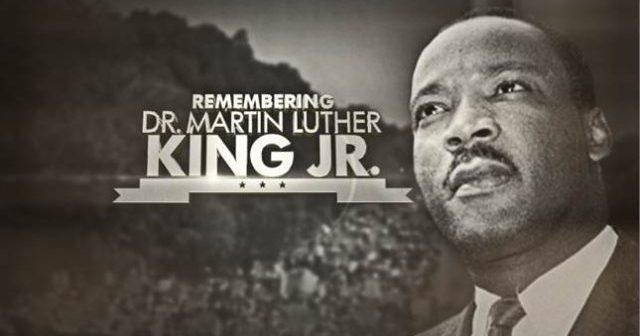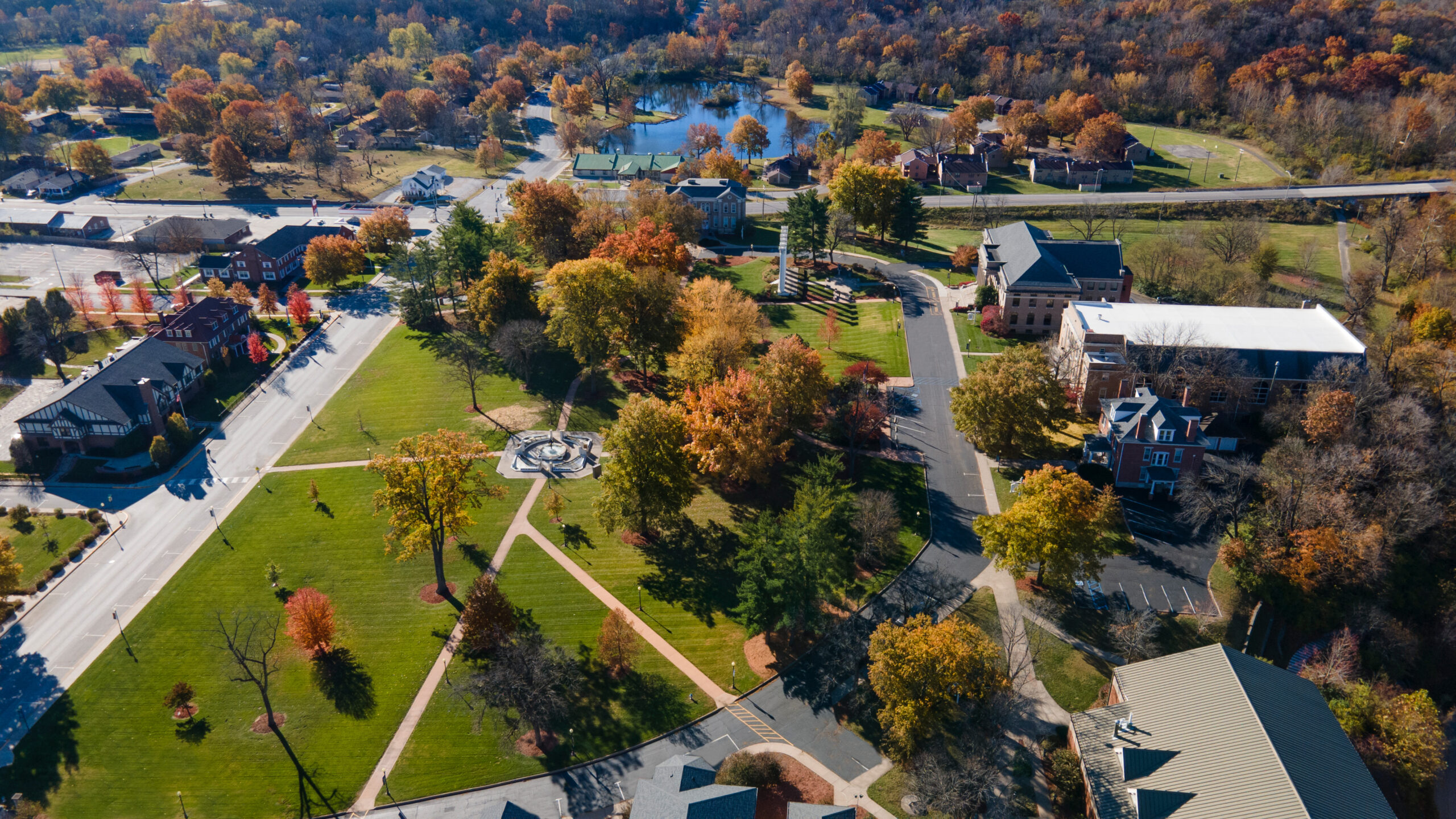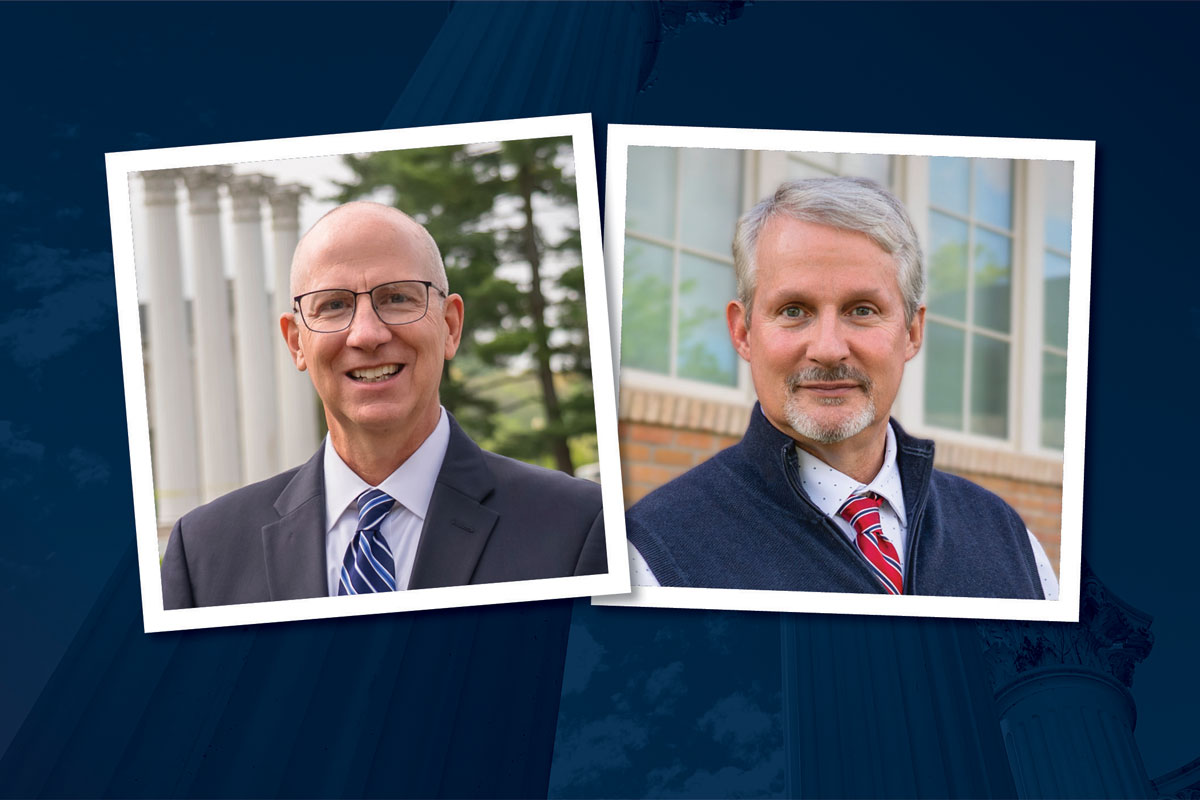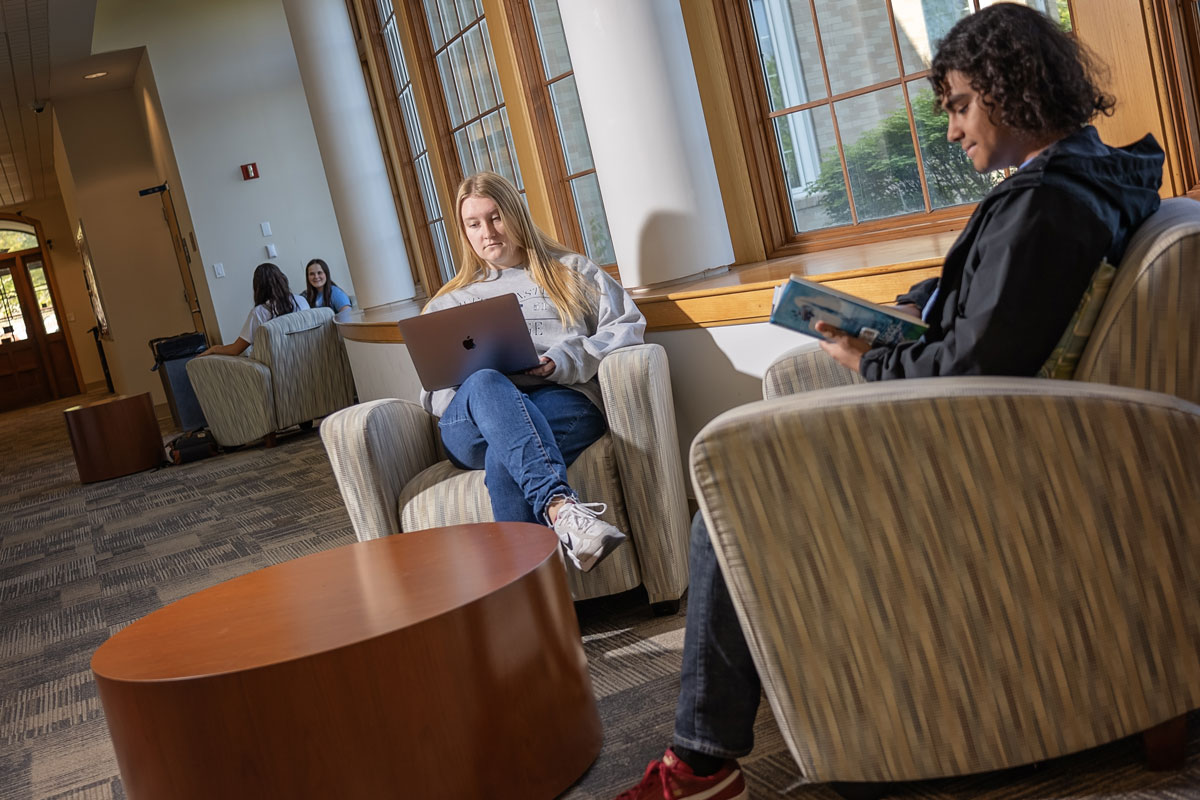Members of the Westminster community gathered at the Church of St. Mary the Virgin, Aldermanbury the night of April 4, to remember Dr. Martin Luther King, Jr. on the 50th anniversary of his death.
The service began with a welcome and reflections from College Chaplain Rev. Jamie Haskins and Kiva Nice-Webb, Chaplain Resident and Coordinator of Community Engagement.
“It is fitting that we gather in a church today, a church that has housed worship and held the prayers, hopes and dreams of the people who have worshiped here throughout the centuries, because Rev. Dr. Martin Luther King, Jr. was an American Baptist minister,” said Rev. Haskins.
In her remarks Rev. Haskins pointed out that Dr. King’s work was deeply influenced by the poetry of Langston Hughes and that his famous “I Have a Dream” speech was, in many ways, a response to Hughes poem “A Dream Deferred” (1951), which explores what it means when dreams are repeatedly deferred because of systematic racism and injustice.
Westminster student Khaled Khalili ’19 ΦΔΘ from Damascus, Syrian Arab Republic, read Hughes poem at the ceremony.

Chelsea Sharp ’19 from Bridgeton, Missouri, read another Hughes poem which was a source of inspiration for Dr. King, “I, Too, Sing America” (1926).
A final Hughes poem that informed Dr. King’s acknowledgment of America’s painful history of racism, “Let America Be America Again” (1936), was also read by Tychirra Moreno ’19 from St. Louis, Missouri; Sandra Mondragon ’19 from Springdale, Arkansas; and Kiva-Webb. This work traces America’s practices of segregation and calls out the deep need for a movement that would rise up and demand a better country and a better world.
The centerpiece of the service was the National Churchill Museum and Westminster College joining other colleges, universities, houses of worship, and other museums and institutions in a symbolic remembrance of Dr. King organized by the National Civil Rights Museum in Memphis, Tennessee. At 6:01 p.m. the historic Clayborn Temple, the central site for the Memphis civil rights movement, located at the national museum, held a bell ringing ceremony in the museum’s courtyard. The bell rang out 39 times—once for each year of Dr. King’s life.
Then local, national, and international chimes followed suit at 6:03 p.m., 6:05 p.m. and 6:06 p.m. respectively.

Rev. Haskins explained to the crowd that the bells of St. Mary the Virgin, Aldermanbury, would chime 39 times at the 6:05 p.m. mark, “signifying that today we, too, stop in the midst of our busy lives, in our comings and goings, to acknowledge the significance of Rev. Dr. Martin Luther King, Jr.’s life and the great loss to our country and our world in the moment of his death.”
The ceremony also included a screening of a segment from Dr. King’s “I’ve Been to the Mountaintop” speech, the last speech he ever uttered on the evening before his death in front of 2,500 people at the Mason Temple in Memphis, Tennessee.
“The question before each of us now, today, is how will we work to make America again?” Rev. Haskins concluded. “If we, too, are America, as Langston Hughes writes, if our lives and our actions, our deeds and our daily work make up the fabric of this country, how will we lend our voices and our labor, our hearts and our souls, our minds, our gifts and our talents, to the struggle for freedom? How will we, inspired by the nonviolent peace, the compassionate protests, the faithful loving and living of Rev. Dr. Martin Luther King, Jr….how will we lead lives that seek to make America again—to craft a nation and a world that is just, fair and good?”
This is the editorial account for Westminster College news team. Please feel free to get in touch if you have any questions or comments.







You must be logged in to post a comment.